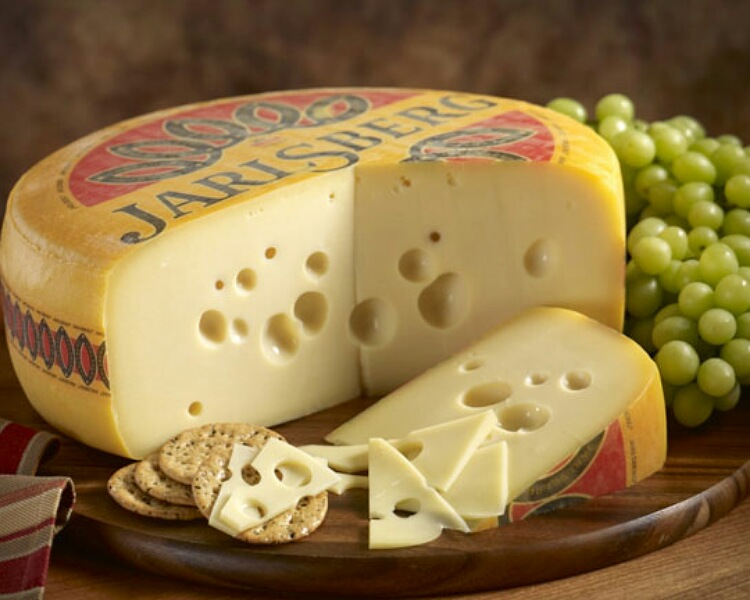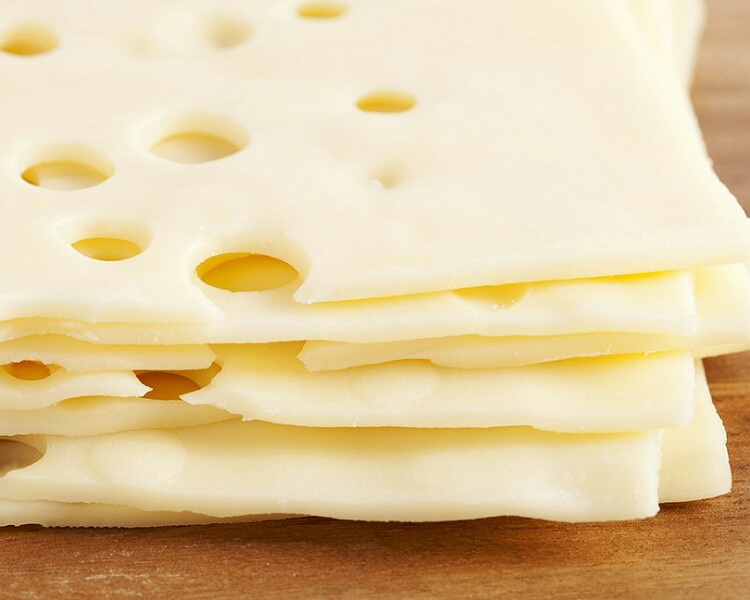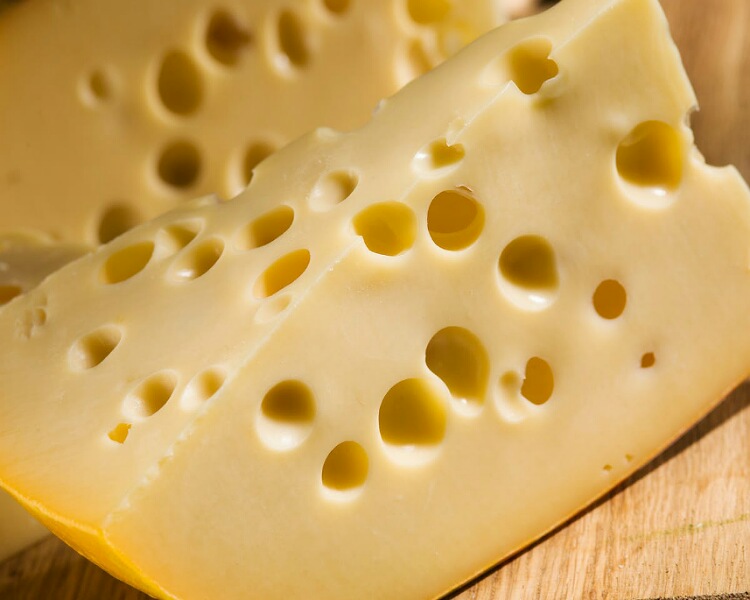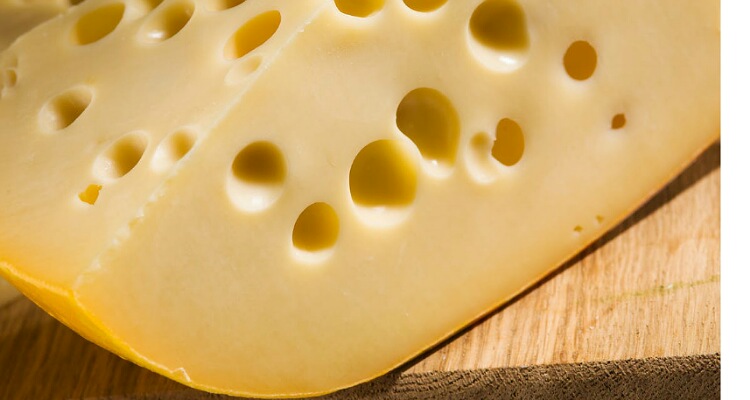The Swiss-type of cheese, Jarlsberg cheese originates from Norway. It has its unique characteristics and health benefits.
Jarlsberg cheese: the origin
Jarlsberg cheese is a Swiss type of cheese. It is made from cow’s milk and is a mild and buttery type of cheese. Its characteristic feature is that it has medium to large regular eyes or holes in it.
These holes come after the action of the gram-positive, non-motile bacteria, Propionibacterium freudenreichii on it. This bacteria is also used in the production of Emmental cheese.
Though these bacteria are naturally found in the cheese, they are again reintroduced into the cheese during its production process. The proportion of this bacteria added to the cheese is a closely guarded secret that only a few know.

The origin of this cheese is from Jarlsberg in Norway and hence the name. Nowadays, it is also licensed by Norway producers for production in the US state of Ohio and Ireland. Its outer layer or rind is yellow and waxy and the interior is semi-firm and also yellow. People describe the flavor as:
“clean and rich, with a slightly sweet and nutty flavour”
The aging of this cheese is for 3 months. Some are also aged for as long as 9, 12, or even 15 months. The first Jarlsberg was manufactured in the middle of the 1850s by a Norway farmer called Anders Larsen Bakke.
But later, it disappeared from the scene and reappeared in 1956 when Ole Martin Ystgaard from the Dairy Institute located in the Agricultural University of Norway redeveloped it.
Trademark and uses
Tine SA first registered Jarlsberg as a trademark in 1972. It is the largest producer of this cheese and also has kept the formula of its making a secret. It manufactures and sells and exports it in bulk to the USA, the UK, as well as in Australia, and other countries.

Jarlsberg is an all-purpose cheese. It can be used in cooking. Moreover, it serves as an excellent and rich snack. It melts very well. Therefore, one can grate it and add it to casseroles, frittatas, quiches, gratins, and such baked dishes. It enhances their flavor and texture.
One can put it into pasta, and also add it to soups, creamy sauces, and also to fondue. It can be mixed into dips and used as cheese balls. It can be placed into sandwiches or burgers. Pop it onto cookies, biscuits, or over apples for that fun taste.
Store it in the deli drawer of the refrigerator and once opened it can last for 10 days.
Nutritive value and health benefits
30 grams of cheese has around 110 calories. Total fat is 8 grams and saturated is 5 grams. It has no trans-fats. The cholesterol level is 25 mg in it. Sodium is 170 mg and there is zero potassium. There are no carbs, sugars, or fiber in it. Protein is also zero. It has calcium and vitamin A but no vitamin C or iron.

All cheese has vitamin K2 in it but Jarlsberg cheese has the most level of this vitamin. The one present in dairy foods is MK-9. And Jarlsberg has both of these in high amounts. Additionally, it also has MK-9(4H). The vitamin strengthens bones and makes them less brittle.
Those who consumed this cheese had elevated markers of bone anabolism compared to those who consumed Camembert cheese. When the latter group started eating Jarlsberg, their bone anabolic markers showed a rise.
